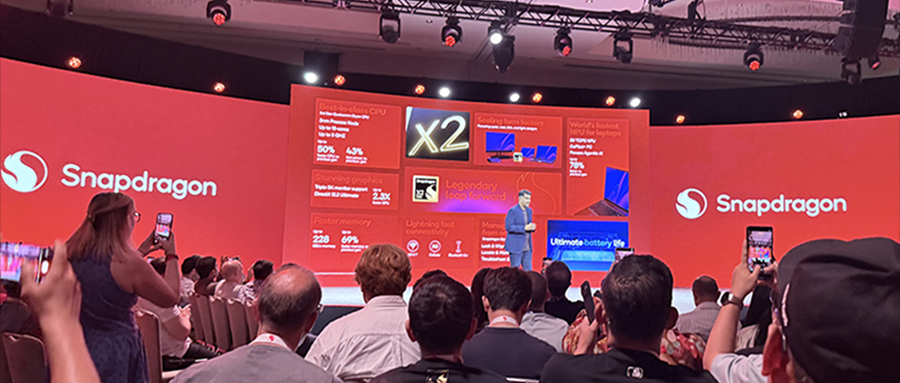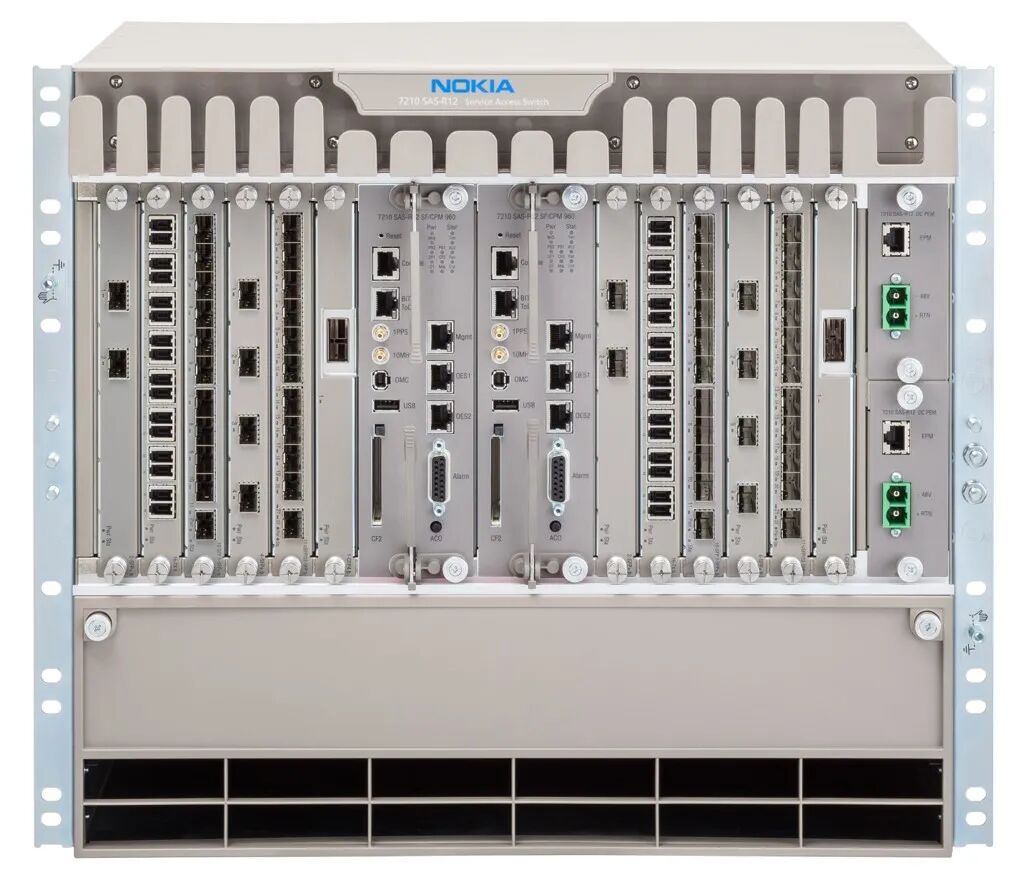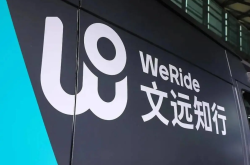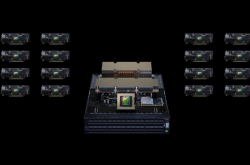Why Is NVIDIA Making a Strategic Play on Nokia?
![]() 11/07 2025
11/07 2025
![]() 506
506
On October 28, 2025, NVIDIA made headlines by announcing an equity investment of roughly $1 billion in Nokia, accompanied by the launch of a strategic partnership aimed at shaping the future of communication infrastructure. At first glance, this move might seem like a modest foray by a chipmaker into the telecom equipment sector. However, it actually underscores NVIDIA's grand vision of evolving from a "GPU leader" to an "AI ecosystem architect." Crucially, this alliance bridges the once distinct realms of "computing power" and "networks," signaling that the next frontier in AI traffic growth will unfold at the edge, access, and network layers. This article dissects this strategic maneuver from four angles: "collaboration specifics → investment trajectory → complementary strengths → industry impact," and highlights pivotal developments to monitor.
Collaboration Specifics: Stake and Technical Synergy
NVIDIA's investment in Nokia is laden with strategic intent. As per Nokia's official announcement, NVIDIA will acquire 166.39 million new shares at $6.01 each through a private placement, totaling approximately $1 billion.
This positions NVIDIA as a shareholder with a roughly 2.90% stake in Nokia.
On the technical front, both entities are zeroing in on two pivotal domains: "AI-RAN (Artificial Intelligence Radio Access Network)" and 6G networks. NVIDIA plans to extend its "AI data center" computing prowess to communication access networks, enabling Nokia to run its 5G/6G RAN software on NVIDIA's hardware framework. Together, they aim to co-develop AI-native RAN and edge network infrastructure.
Nokia, armed with a wealth of technical assets in wireless access gear, base station software, data center network switches, and optical communication equipment, emerges as a vital gateway for NVIDIA to penetrate the telecom infrastructure sector.
Both sides have also emphasized that this partnership transcends traditional base stations or RAN cloudification, extending into "distributed edge AI inference" scenarios. This will facilitate low-latency, intelligent interactions for future drones, augmented reality, autonomous vehicle IoV, and perceptive communication fusion applications within wireless networks.
Complementary Strengths: Nokia's Technical Prowess and NVIDIA's AI Acceleration Needs
What makes Nokia NVIDIA's partner of choice in this strategic layout? The answer lies in the complementary nature of their strengths in "computing power" and "networks." Specifically:
1. Nokia's Technical Edge
Optical Communications and Data Center Networks: In 2024, Nokia bolstered its capabilities by acquiring U.S. optical transmission equipment manufacturer Infinera for around $2.3 billion. This move strengthened its foothold in high-speed fiber optic transmission, photonic integrated circuits, and large-scale data center interconnect switching gear.
Wireless Access and Base Station RAN: As a seasoned telecom equipment maker, Nokia has amassed experience in 5G wireless access, base station software (including the AirScale system), base station virtualization, and RAN cloudification. Its recent announcements underscore a commitment to accelerating the migration of its 5G/6G RAN software to AI-RAN platforms.
Data Center Network Transformation: Nokia has stated its intention to utilize the funds from this equity investment to "hasten its strategic plan to expand the role of AI and cloud markets in network infrastructure."
2. NVIDIA's AI Acceleration Imperative
NVIDIA has long been synonymous with GPUs and AI accelerators. Its next phase isn't merely about supplying "training/inference computing power" but about constructing a holistic AI infrastructure spanning data centers to the edge. Collaborations like the one with OpenAI and the construction of a 10 GW-scale system reflect its lofty ambitions.
However, NVIDIA's involvement in network infrastructure, edge access, RAN networks, and optical communications has been limited. To truly cater to the "physical-AI" era, encompassing drones, IoV, AR/VR edge inference, its "network capabilities" require urgent reinforcement.
Thus, Nokia's technical assets in telecom access, data center interconnects, and optical communication equipment align seamlessly with NVIDIA's vision for "computing power + networks + applications." In essence, NVIDIA "brings the computing power," while Nokia "offers the networks + equipment + ecosystem." Together, they can lay the foundation for the future AI-RAN and 6G era.
Case in Point: Nokia's SR Linux software (integral to its switch/router operating system) holds integration potential with NVIDIA's Spectrum-X Ethernet networking platform (public reports mention discussions between the two companies about incorporating Nokia's data center switching/optical communication technologies into NVIDIA's future AI infrastructure).

Image Source: Internet
Simultaneously, in base station scenarios, optimizing resource allocation through AI-RAN technology and achieving lower latency and higher intelligence in drone, autonomous driving, or XR scenarios are key areas of focus for this partnership. Nokia's expertise in "base stations + network slicing + optical communications" precisely addresses NVIDIA's gaps in edge computing and telecom infrastructure.
NVIDIA's Investment Landscape: From GPU Leader to AI Ecosystem Architect
From a broader perspective, NVIDIA's recent investment spree and strategic direction underscore its transition from a "pure chip supplier" to an "AI infrastructure platform provider."
Longitudinal View: While comprehensive investment data from 2022-2024 isn't publicly available, recent reports indicate that NVIDIA's cooperation commitment to OpenAI has reached a "$100 billion investment" level (announced in September 2025). Meanwhile, its investments, alliances, and data center orders are on a significant upswing. Media outlets widely note that "AI infrastructure investments are multiplying."
Investment Screening Criteria: NVIDIA's strategy focuses on selecting categories within "core AI infrastructure"—including training/inference/data centers (such as OpenAI), edge computing/autonomous driving (such as Wayve), AI data labeling/foundational software (such as ScaleAI), etc.
Horizontal Synergy: Within this framework, Nokia stands apart from invested entities like OpenAI. The latter is a technology company centered on pure software/model layers, whereas Nokia is an equipment manufacturer with hardware devices, communication network infrastructure, optical transmission networks, and a global service provider network. From NVIDIA's vantage point, investing in Nokia means entering the "telecom infrastructure + edge network" market, which horizontally complements its previously dominant "cloud-data center computing power" market. In other words, while OpenAI focuses on "models + inference applications," Nokia zeroes in on "physical network infrastructure + switching/transmission + edge RAN," filling NVIDIA's gaps in the telecom network layer.
Ecosystem Logic: Binding Customers and Countering Competitors
Through this equity investment and strategic partnership, NVIDIA is also engaging in a strategic ecosystem play:
Binding Key Customers/Channels: The collaboration announcement states that U.S. operator T-Mobile US will team up with Nokia and NVIDIA to conduct AI-RAN trials (expected to commence in 2026). NVIDIA leverages Nokia's channels to infiltrate the telecom operator ecosystem, thereby unlocking application scenarios for its AI hardware/network platforms.
Countering Microsoft/Google's Self-Developed Chip Threats: Microsoft, Google, and other tech behemoths have recently ramped up their efforts in self-developed AI chips. By investing in network equipment manufacturers and constructing a network ecosystem, NVIDIA is locking in a broader value chain of "computing power + networks + converged applications," thus evolving from a mere chip supplier to a provider of underlying infrastructure platforms. This enhances its long-term competitive barriers.

Image Source: Internet
Forming a Closed-Loop Ecosystem: NVIDIA is expanding its reach from "training-inference computing power" to "edge acceleration + network access + application scenarios." After partnering with Nokia, it can embed its GPU/network acceleration platforms into wireless access networks (RAN) and telecom infrastructure, achieving a "computing power-network-application" closed loop.
Why Nokia's "Technical Leverage" Was Chosen
Reflecting on why Nokia emerged as the strategic partner, three key factors cannot be overlooked:
Hardware Synergy: Nokia boasts mature exchange/routing/optical communication equipment products (including the SR Linux switching platform), data center network switches, and optical transmission systems. Pairing these with NVIDIA's Spectrum-X Ethernet networking platform or ARC-Pro platform will bolster its competitiveness in AI data center networks. The official announcement mentions that both parties will explore integrating Nokia's switching and optical communication technologies into NVIDIA's future AI infrastructure.
Scenario Positioning: The edge AI era demands that wireless networks evolve from a mere "transmission" role to an "intelligent access" role. Through AI-RAN, base stations and edge computing nodes will acquire real-time AI inference capabilities, providing low-latency, intelligent connections for drones, autonomous driving, AR/VR glasses, industrial IoT, and other scenarios. Nokia is positioning its wireless access and transmission equipment to align with NVIDIA's vision for the "AI traffic surge" (i.e., future massive AI scenarios will drive significant increases in network bandwidth, latency, and intelligence demands).
Policy Dividends: Including Finland's government-driven 6G R&D plan, Europe/North America's strategic demand for communication network autonomy, and operators' urgency for commercializing AI-native networks (i.e., AI-RAN). By collaborating with Nokia, NVIDIA can tap into European telecom equipment manufacturers' channels to strengthen its foothold in European/North American markets.
Industry Chain Restructuring Signals: The Semiconductor Competition Enters the Ecosystem War Era
This transaction transcends a mere capital exchange between two companies; it signals a broader industry chain restructuring. Specific manifestations include:
Increased Pressure on Telecom Equipment Manufacturers (such as Ericsson, Huawei): As networks transition from transmission equipment to "intelligent AI access + edge computing," equipment manufacturers must swiftly complete AI-driven upgrades; otherwise, they risk being overtaken by players with stronger computing power/software capabilities.
Accelerated Defensive Investments by Rivals: Qualcomm and Intel may be compelled to expedite their layouts in edge AI and network infrastructure to counter NVIDIA's integrated advantages in "computing power + networks."

Image Source: Internet
Vertical Integration and Ecosystem Binding Will Become Winning Thresholds: Relying solely on chip advantages is no longer tenable. Future success may hinge on the comprehensive capabilities of "computing power hardware + network access + edge scenario applications." The NVIDIA-Nokia collaboration is a quintessential example and attempt in this direction.
Risk Warnings
Of course, this strategic landscape isn't devoid of vulnerabilities. We must also acknowledge potential risks:
Monopoly and Regulatory Concerns: NVIDIA's investment in equipment manufacturers and its binding to key network infrastructure may raise antitrust or national security regulatory concerns, especially given that telecom infrastructure is deemed "critical national infrastructure." Public reports already indicate regulatory scrutiny of such "computing power + network" integrations.
Resource Conflicts Between Nokia's Traditional Business and AI Transformation: Nokia traditionally relies on operator equipment procurement, with limited profit margins in wireless communication hardware. Its shift to AI data center networks, optical communications, and high-speed switching equipment necessitates substantial capital investment, software transformation, and ecosystem partner collaboration. During this transition, risks such as resource allocation dilemmas, profit fluctuations, or strategic drift may arise.

Image Source: Internet
Technology and Market Adoption Risks: While AI-RAN and 6G represent future trends, standardization, commercial deployment, operator procurement, and large-scale adoption still require time. Although NVIDIA and Nokia plan to initiate trials in 2026, the commercialization path remains uncertain.
Final Thoughts: The Next Battleground in the AI Competition
Overall, NVIDIA's investment and collaboration with Nokia clearly demonstrate its ambition to construct a closed-loop ecosystem of "computing power-networks-applications." It is no longer content with being a mere provider of "training/inference chips" but aims to become a supplier of underlying platforms for "next-generation intelligent networks + edge computing + AI scenario infrastructure."
Future milestones to watch include:
The data and results from the AI-RAN field trials with T-Mobile and other operators in 2026 will be pivotal in gauging the success of this strategy.
How Nokia will integrate its optical communication/data center network assets acquired from Infinera with NVIDIA's collaboration projects and achieve commercialization in edge networks.
Whether NVIDIA will continue down this "network infrastructure" path by acquiring optical communication components, switching equipment manufacturers, or quantum computing entities, potentially leading to significant restructuring of the semiconductor and network equipment industry chains.
Amid the fierce global competition in the realm of artificial intelligence, this pivotal "transition from GPUs to network infrastructure" could very well determine who will shape the future in the "physical AI + edge intelligence" era. For investors, industry leaders, and equipment makers, this shift transcends mere financial transactions; it serves as a harbinger of an industrial structural transformation.
Reference Information Sources: Nokia Corporation, The Times of India, Reuters, NVIDIA Blog, The Register, Tech Crunch, Fast Company, etc.








